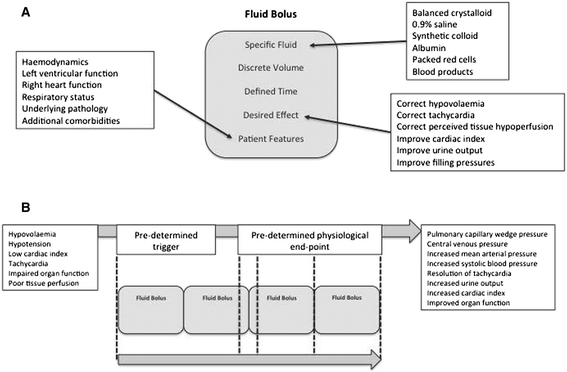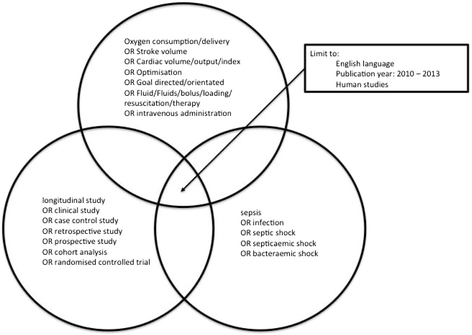Physiological changes after fluid bolus therapy in sepsis: a systematic review of contemporary data
- PMID: 25673138
- PMCID: PMC4331149
- DOI: 10.1186/s13054-014-0696-5
Physiological changes after fluid bolus therapy in sepsis: a systematic review of contemporary data
Abstract
Fluid bolus therapy (FBT) is a standard of care in the management of the septic, hypotensive, tachycardic and/or oliguric patient. However, contemporary evidence for FBT improving patient-centred outcomes is scant. Moreover, its physiological effects in contemporary ICU environments and populations are poorly understood. Using three electronic databases, we identified all studies describing FBT between January 2010 and December 2013. We found 33 studies describing 41 boluses. No randomised controlled trials compared FBT with alternative interventions, such as vasopressors. The median fluid bolus was 500 ml (range 100 to 1,000 ml) administered over 30 minutes (range 10 to 60 minutes) and the most commonly administered fluid was 0.9% sodium chloride solution. In 19 studies, a predetermined physiological trigger initiated FBT. Although 17 studies describe the temporal course of physiological changes after FBT in 31 patient groups, only three studies describe the physiological changes at 60 minutes, and only one study beyond this point. No studies related the physiological changes after FBT with clinically relevant outcomes. There is a clear need for at least obtaining randomised controlled evidence for the physiological effects of FBT in patients with severe sepsis and septic shock beyond the period immediately after its administration.
Figures




Comment in
- Crit Care. 2015;19:360
-
Fluid bolus therapy is a medical therapy or a diagnostic method?Crit Care. 2015 Oct 13;19:360. doi: 10.1186/s13054-015-1078-3. Crit Care. 2015. PMID: 26458396 Free PMC article. No abstract available.
References
-
- Holliday MA, Segar WE. The maintenance need for water in parenteral fluid therapy. Pediatrics. 1957;19:823–832. - PubMed
-
- Network SIG. SIGN Guidelines. Healthcare Improvement Scotland: Edinburgh; 2004. Postoperative management in adults. A practical guide to postoperative care for clinical staff.
-
- Powell-Tuck J, Gosling P, Lobo DN, Allison SP, Carlson GL, Gore M, Lewington AJ, Pearse RM, Mythen MG: British consensus guidelines on intravenous fluid therapy for adult surgical patients (GIFTASUP). [http://www.bapen.org.uk/pdfs/bapen_pubs/giftasup.pdf]
-
- Resuscitation Council UK . Advanced Life Support Manual. 6. London: Resuscitation Council (UK); 2011.
Publication types
MeSH terms
Substances
LinkOut - more resources
Full Text Sources
Other Literature Sources
Medical

